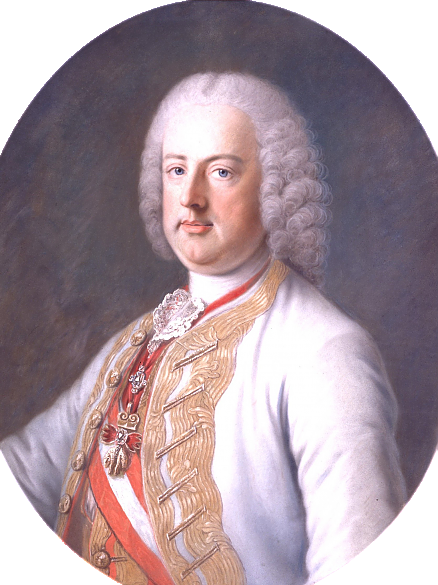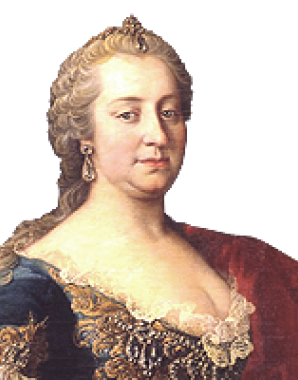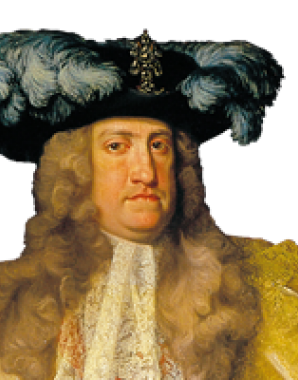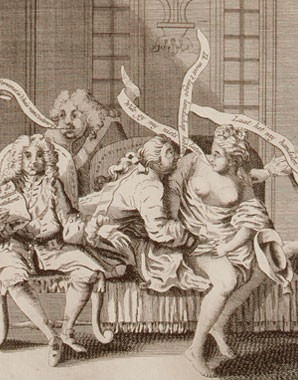Franz Stephan as the founder of the Habsburg-Lorraine dynasty
Franz Stephan is the progenitor of the House of Habsburg-Lorraine. However, from the Austrian/Habsburg point of view the creation of the new dynasty was not necessarily regarded as representing a break. Maria Theresa constituted the link: both before and after Maria Theresa the dynasty is referred to as ‘the Habsburgs’.
Maria Theresa has always been represented in patriotic historiography as a radiant and natural ruler over her dominions, a ‘luminous’ sovereign who was regarded as the ‘mother of her country’. Her 40-year reign is seen as an age of reform that has left its imprint on many aspects of modern-day Austria.
However, this was not what her father, Emperor Charles VI, had envisaged for her: according to his plans, Maria Theresa would have inherited the Habsburg Monarchy, but her husband was to assume the reins of government in her name. With this in mind the Viennese Court started to look for a suitable husband for her.
A match was found in Franz Stephan of Lorraine, who was subsequently groomed as Charles’s successor. The emperor wanted a son-in-law who could be considered as his successor in the Holy Roman Empire. From an ancient but not particularly powerful dynasty, Franz Stephan could look back on a venerable ancestral lineage, the dukes of Lorraine being one of the oldest princely families in the Holy Roman Empire. Franz Stephan also numbered several Habsburgs among his forbears, including Archduchess Eleonore, his paternal grandmother, who was a sister of Emperor Leopold I, Maria Theresa’s grandfather.
The marriage between Maria Theresa and Franz Stephan, often presented in popular historiography as a romantic love-match, had a lengthy prologue. Referred to as the ‘grand affaire de Lorraine’, it occupied the European diplomatic scene for many years. Originally it was Franz Stephan’s elder brother Clement who had been intended as the Austrian heiress’s bridegroom. However, he died at a young age and his place was taken by Franz Stephan. In 1723 at the age of just fifteen, the young Lotharingian prince was taken into the Habsburg family as a prospective son-in-law. It was then that he first met Maria Theresa, who was just six years old at the time. Numerous biographies emphasize the early sympathy between the two, despite the age difference of nine years between them.
Marriage to Maria Theresa, which took place in 1736, needed the approval of the Great Powers and required Franz Stephan to waive all claims to his ancestral Lotharingian dominions. Having thrown aside his quill several times in anger when asked to sign the declaration of renunciation he was laconically confronted with the choice: “No signature, no archduchess!”
In compensation for the loss of Lorraine in 1735 he was promised the Grand Duchy of Tuscany. For this he had to wait until 1737 however, when the last ruler from the House of Medici, Gian Gastone, died without issue.
In exile at the court of his father-in-law Charles VI, Franz Stephan was given the well-remunerated offices of governor of Hungary and the Austrian Netherlands. He was also entrusted with military posts and appointed generalissimo of the Habsburg forces in the Turkish War of 1737–1739. However, the campaign proved a fiasco, with Austria losing most of the territories it had gained at the Peace of Passarowitz in 1718. From then on Franz Stephan was compromised as a military leader, and he never again assumed a military command.
After the sudden death of Emperor Charles VI in 1740 Franz Stephan officially became joint ruler with his wife Maria Theresa. Although closely involved in the affairs of government at the start, he was increasingly marginalized by his forceful wife. His qualities as a ruler have been variously assessed in the literature, in some cases possibly in order to place Maria Theresa in a more advantageous light.
















